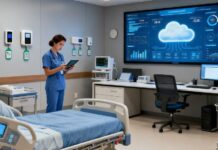Healthcare facilities face increasing pressure to manage rising operational costs while maintaining high-quality patient care. One innovative solution addressing this challenge is the use of telesitters—remote video monitoring systems that assist in patient observation. Using a telesitter can offer a cost-effective approach to managing resources, reducing staffing needs for non-critical tasks, and enhancing patient safety. Here’s how telesitters can help ease financial strains on healthcare facilities.
Reducing Staffing Costs
Traditionally, healthcare facilities have relied on one-on-one sitters for patients at risk of falling or exhibiting behaviors that require constant supervision. This approach, while effective, is labor-intensive and costly. Telesitters enable a single staff member to remotely monitor multiple patients simultaneously, significantly reducing the need for additional personnel.
This shift can translate into substantial savings. Instead of hiring multiple sitters for individual patients, facilities can allocate resources to other critical areas, reducing overtime expenses and minimizing the need for costly temporary staffing solutions.
Enhancing Operational Efficiency
Telesitters streamline workflow by centralizing patient monitoring. Staff can focus on clinical responsibilities rather than routine observational tasks. For example, nurses and aides can prioritize direct care instead of continuously checking on patients at risk of falls.
Efficient use of telesitters also means fewer interruptions for healthcare providers, improving productivity and job satisfaction. This optimization leads to better allocation of human resources, ensuring high-quality care while minimizing unnecessary expenditures.
Reducing Fall-Related Costs
Patient falls are a major concern for healthcare facilities, both in terms of patient outcomes and financial liability. Falls often result in extended hospital stays, additional treatments, and legal challenges—all of which increase costs.
Telesitters act as a preventive tool, alerting staff to patient movements that could lead to falls. By reducing the incidence of falls, facilities can avoid the associated costs, such as litigation and non-reimbursable medical expenses, helping to stabilize budgets.
Minimizing Equipment Loss and Damage
Another financial burden for healthcare facilities is the loss or damage of medical equipment, often due to unauthorized access or improper use by patients. Telesitters provide continuous monitoring, ensuring patients only interact with equipment under supervision.
This oversight reduces the likelihood of equipment being tampered with or damaged, which can save thousands of dollars annually in repair and replacement costs.
Improving Patient and Family Satisfaction
Although financial savings are critical, patient and family satisfaction also play a significant role in a facility’s reputation and revenue. Telesitters improve safety and provide peace of mind to families, knowing their loved ones are under constant observation.
Higher satisfaction rates can lead to better patient retention, increased referrals, and enhanced ratings, all of which contribute to the financial health of the institution.
Initial Investment vs. Long-Term Savings
Implementing telesitter technology requires an upfront investment in equipment and training. However, the long-term savings far outweigh these initial costs. Facilities can achieve a rapid return on investment through reduced staffing needs, fewer fall-related expenses, and lower operational overhead.
Conclusion
Telesitters represent a modern solution to financial and operational challenges in healthcare. By reducing staffing costs, preventing costly incidents, and optimizing resource allocation, this technology helps facilities provide safer, more efficient care while easing financial strains. As healthcare facilities continue to seek innovative ways to balance quality care with cost containment, telesitters are emerging as an essential tool for sustainable operations.














